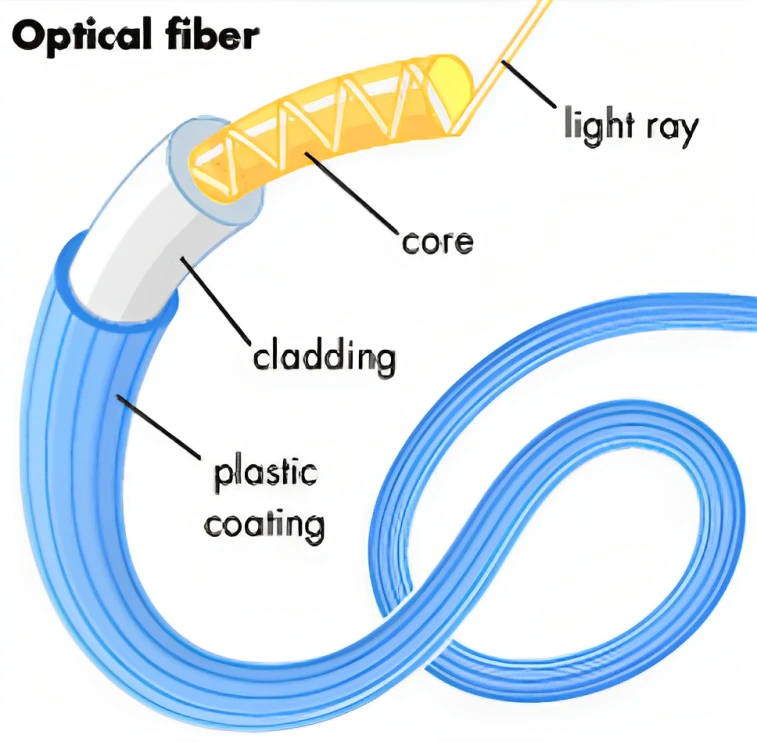Context: Along with quantum optics, optical fibre cable communication stands on the point of transition to a new era.
What are optical fibre cables?
- Optical Fibre cables: These are made of thin cylindrical strands of glass. The diameter of a typical fibre is close to the diameter of a human hair.

- Function: These optical fibre cables can carry information, such as text, images, voices, videos, telephone calls, and anything that can be encoded as digital information, across large distances almost at the speed of light.
- Optical waves allow a high data-transmission rate.
- Unlike radio or copper-cable-based communication, fibre cables are also insensitive to external perturbations such as lightning and bad weather.
- Uses: Fibre optics technology has been widely used in telecommunication, medical science, laser technology, and sensing.
Physicist Charles Kao:
- Charles Kao suggested that glass fibres could be a superior medium for telecommunication, replacing the copper wires of the time.
- His prediction is a reality today and for his ground-breaking achievements concerning fibre optic communication, Dr. Kao received a part of the 2009 Nobel Prize in physics.
|
- Fragility: Ultra-thin fibres seem very fragile but when manufactured correctly, they become strong, light, and flexible, and ideal to be buried underground, drawn underwater, or bent around a spool.
- Development: In India, the Fibre Optics Laboratory at the Central Glass and Ceramic Research Institute, Kolkata, has a facility to manufacture high-quality silica-based optical fibres.
Working of Optical fibre Cables:
- A fibre optic communication system consists of three parts:
- Transmitter encodes information into optical signals.
- Optical fibre cable carries the signal to its destination.
- Receiver reproduces the information from the encoded signal.
- Light is an electromagnetic wave with a spectrum of frequencies.
- When a beam of light falls on a glass surface, it passes through partially while the rest is reflected away.
- When it passes through, its path bends because the refractive index of glass is different from that of air.
- The refractive index is the property of a medium that determines how fast light can travel in it.
- Total Internal Reflection: When a beam travels from glass to air, it’s possible that it won’t enter the air and it will be completely reflected back within the glass.
- This phenomenon is the basis of guiding light across long distances without a significant loss of optical power.
News Source: TH
![]() 28 Nov 2023
28 Nov 2023
